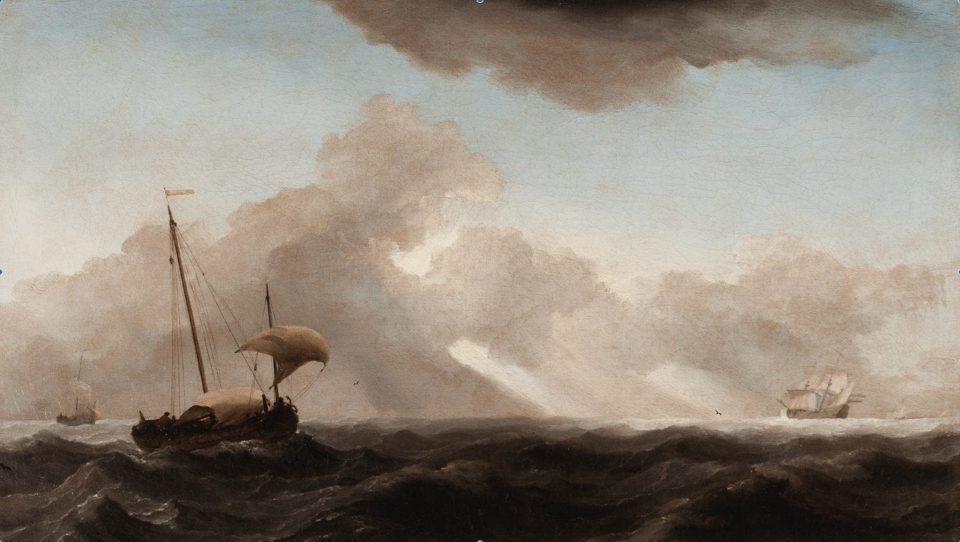Leiden 1633 – 1707 London
The present seascape belongs to a group of works by Van de Velde the Younger painted around the same time, now in Amsterdam, Rijksmuseum, Kassel Gemäldegalerie, New York Metropolitan Museum of Art and Paris, Fondation Custodia.
One in a private collection in Los Angeles is mentioned in Robinson (II pp.876-878)
These paintings all share a similar pictorial scheme. Interestingly these last two works can be directly connected with drawings made by Van de Velde during the month of May 1665. Moreover the preparatory drawing for the Los Angeles work, now in the Greenwich National Maritime Museum, carries and inscription giving the exact location
depicted:’voor de helder, wonsdach den 20 meij 1665’. (in front of Den Helder Wednesday 20 May 1665) During the month of May 1665, the Dutch fleet, under the command of Jacob Baron van Wassenaer Opdam (1610-1665), gathered before the coast of Den Helder and the island of Texel, in the so-called Marsdiep, in preparation for what would soon become the first naval battle of the Second Anglo-Dutch War. The both Van de Veldes were present to make a visual record of the activities.
The relationship between the paintings ad drawings made confirm a dating just after 1665 for the present seascape.
Willem van de Velde the Younger and his father Willem van de Velde the Elder were hailed as the leading marine artists of their time in Europe.
Willem van de Velde the Younger was born in Leiden in 1633. The family moved to a house near the river IJ in Amsterdam shortly afterwards. By this time Van de Velde the Elder was already a renowned marine artist, famous for his accurate draught Manship and skilled pen sketches. It is thought that Van de Velde the Younger’s first teacher was his father and thereafter he studied under Simon de Vlieger. His earliest dated painting is 1651. In 1672/ early 1673 Father and son moved to London where the entered the service of King Charles II and the Duke of York. They enjoyed considerable status and benefited from a studio in the Queen’s house at Greenwich. Willem van de Velde the Elder died in England in 1693. Van de Velde the Younger remained in England until his death in 1707. They both were buried in St James ‘s Piccadilly.
When in the collection of the late baron Nathaniel von Rothschild in Vienna (not to be confused with the London based Baron Nathan Rotschild as Robinson supposed), the work was catalogued by Cornelis Hofstede de Groot as ‘a fresh breeze – a fine fresh painting’ in his 1923 catalogue of Van de Velde’s oeuvre. It was subsequently bequeathed to Alfons von Rothschild, son of Nathaniel’s brother Albert. After the Austrian Anschluβ in 1938, the Rothschild possessions were plundered by the Nazi Authorities. This painting was destined to form part of the Führermuseum in Linz. After the war restitution was made to the Rothschild family.
The restitution of one of the largest collections in Austria went in stages. A part was returned in 1946 other parts later. In the literature there is much debate when what was restituted. The latest data published in the book by Kunth show that this painting, which was meant for the Führermuseum in Linz under nr. 9694, was stored in Kremsmünster during the war and restituted on 25 april 1946. Alphonse de Rothschild had died in 1942 in Bar Harbor USA. His widow Clarice Sebag Montefiore was British.
The family went to England after the war and sold the picture in 1963 to Leonard Koetser.
Share this:

